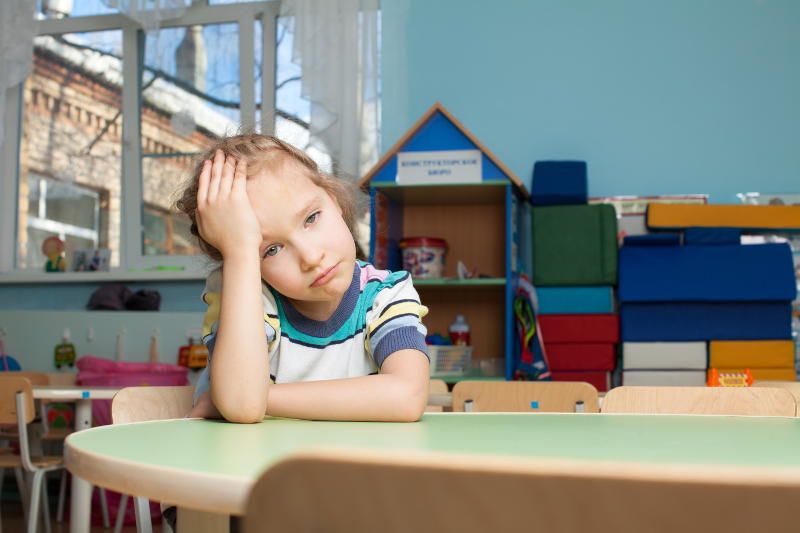As a parent, it can often be difficult to notice the first few signs of a decline in your child’s eyesight. While we all wish we could sometimes use some magic machine that could let us see what they see, we instead have to rely on what they have to say coupled with a few telltale signs there is a potential problem with your child’s vision and you may need to bring your child in for an eye exam.
Some signs of eye problems are more subtle than others and will often rely on a parent, teacher, or other adult noticing a distinct change in behavior they personally associate with changes in eyesight.
It is best to keep yourself armed with the knowledge that there are several less obvious signs of eye problems. Having these in your repertoire will make you all the more well-equipped to help your child if they are having a change in their vision.
How Can I Tell If My Child Needs Glasses?
There are a few signs that may indicate your child is experiencing difficulties with their eyesight.
Covering One Eye
When a child is covering one eye in order to see, there are a variety of likely causes. Astigmatism could cause a drastic difference in vision between the left and right eye. When left uncorrected, your child may attempt to make up for this frustrating effect by covering an eye to eliminate the jarring difference.
Extra sensitivity to light or lazy eye could also be the culprit here, making it important to seek the opinion of an eye care expert.
Nausea
Sudden frequent nausea may be caused by your child’s increased need to focus harder in order to see. In some cases, this extreme focus can cause serious problems for your child, including increased general nausea.
If your child is experiencing nausea and you’ve already taken them to a general practitioner and ruled out a more serious disease you will likely want to bring them in for an eye exam.
Lack of Depth Perception
A child who is suddenly accidentally hurting themselves or dropping items may not be the victim of inexplicable clumsiness. Rather, their depth perception may instead be disturbed by a problem with their eyesight.
Children may not connect their newfound clumsiness with a potential eyesight problem. Remember to keep this in mind if your child seems to be missing their mark more often than not.
Squinting
This is one of the biggest tells and probably the one most parents are trained to look for. Teachers will readily notice students squinting to see the board in class and students who mention they are unable to take notes because of it.
If your child’s teacher alerts you to any increased squinting, or you notice it around the house, making an appointment with an eye doctor is probably the thing to do.
Squinting may be the sign of a refractive error in your child’s vision. Examples of common refractive errors include astigmatism, hyperopia (farsightedness), myopia (nearsightedness), and presbyopia, a more specific type of farsightedness in which individuals cannot see objects close to them.
Presbyopia is a condition that nearly everyone will experience at some point in their life. It typically develops over time and in older individuals.
Astigmatism is a more common condition in which the curvature of one eye gives it two focal points, causing a disruption in vision.
Getting Too Close to Objects In Order to See
Another classic telltale, children who sit too close to the TV are most likely experiencing eye problems. It may also help to pay attention to how close they hold books or tablets and phones to their faces.
If you notice your child must hold things closer than before or walk right up to them in order to see it is usually a sign of nearsightedness. Be on the lookout for any signs of farsightedness your child may be experiencing as well.
These will likely be more obvious. If you see your child having to hold objects far from their face in order to see them clearly, they likely are experiencing vision problems.
Frequent Headaches
A side effect of frequent squinting and strain, frequent headaches often accompany changes in eyesight. Pay special attention to children who don’t normally experience headaches who suddenly begin to experience them regularly.
The added effort children undergo in order to bring items into focus when their vision has changed can cause them to experience large amounts of pressure, so don’t let this go unchecked for long.
If this is not a vision-related problem it could potentially be a more serious medical problem and warrants a trip to the doctor regardless.
Tilting Their Head
A child who is tilting their head in order to see may be experiencing amblyopia or lazy eye. When a child experiences amblyopia it is caused by a miscommunication between the eyes and the brain which in turn inhibits the performance of one eye.
Lazy eye can also be caused by unchecked nearsightedness or astigmatism. Lazy eye is treatable. The earlier you treat a child for their lazy eye, the better the outcome will be.
Treatment is usually administered through atropine, a drug which helps to weaken the dominant eye and forces the lazy eye to work twice as hard, and an eye patch over the dominant eye.
Sudden Decline in School Performance
This can be linked to squinting and nearsightedness which prevents children from concentrating on the front of the classroom. Vision problems can also cause children to have a difficult time reading school materials.
Oftentimes, children do not understand that they are struggling due to changes in their eyesight. Noticing the link between changed behaviors or results from children when they cannot is sometimes difficult, but it can also often be the only way children’s eye problems are properly diagnosed before becoming worse.
Complaining of Eyes Being Tired
The excess strain children put their eyes under in order to make up for blurred and flawed vision not only causes headaches and nausea but puts their eyes under immense amounts of pressure. The harder the eyes are working, the more likely they are to be overtired as a result of their exertion.
Children experiencing this sort of ocular fatigue may be noticed rubbing their eyes more often or closing them frequently although they are not otherwise tired.
If a child says their eyes are tired or that their eyes hurt, you’ll likely do well to bring them to an eye doctor for an exam to make sure there is no serious medical condition behind the increased fatigue.
Double Vision
Double vision is more often than not a symptom of a more serious eye problem and should be addressed immediately. Children experiencing double vision may be undergoing vision misalignment. This could be another symptom of a lazy eye or could be due to a serious nerve problem.
In any case, this is one sign that parents should take extremely seriously. Children experiencing double vision are at risk for prolonged permanent damage to their eyes at best, or experiencing a serious nerve condition at worse.
Eyes Tearing Up
Excessive tearing could be due to a condition causing their eyes not to fully close at night. Known as lagophthalmos, this condition can cause one’s eyes to dry out. Sleep is an important regenerative process for many bodily functions and the eyes are no exception.
The eyes rely on sleep for an extended period of rejuvenation. The eyelids need to fully close and remain closed during sleep in order to achieve this.
Those experiencing lagophthalmos will not fully close their eyes at night when they are sleeping which in turn causes them to dry out. During the daytime, the eyes will try to overcompensate for this by frequently tearing up.
Difficulty Concentrating
Children who are no longer able to concentrate may feel overwhelmed by their change in vision. One is hard-pressed to remember how frustrating this time of life can be, especially when everything around them suddenly becomes distinctly unreadable.
There can, of course, be many different reasons why your child is having difficulty concentrating. These reasons can range from emotional to behavioral, but a change in eyesight is also one of them. If your child complains of a newfound difficulty concentrating, and not just on academic materials, it may be due to a change in eyesight affecting the entire world around them.
Contact Mt. View EyeCare
If your child is experiencing any combination of several of these signs, it is likely they are experiencing a change in their vision or undergoing another vision-related problem. When it comes to vision problems it is better to get help sooner rather than later.
If any of these signs remind you of behavior your child is currently displaying, please do not hesitate to consult the opinion of an eye care professional. Make an appointment with Mt. View EyeCare in Vancouver, WA today.


